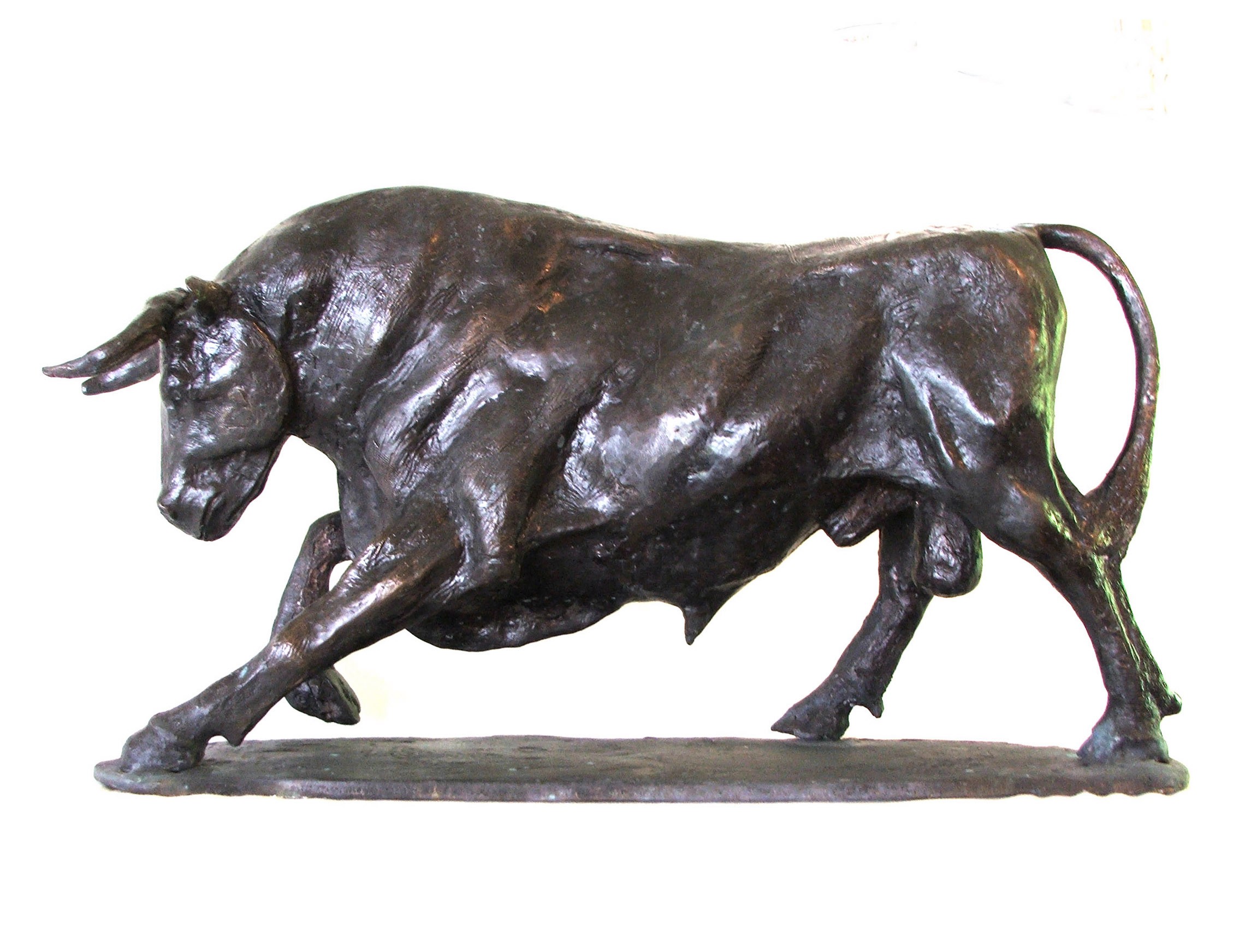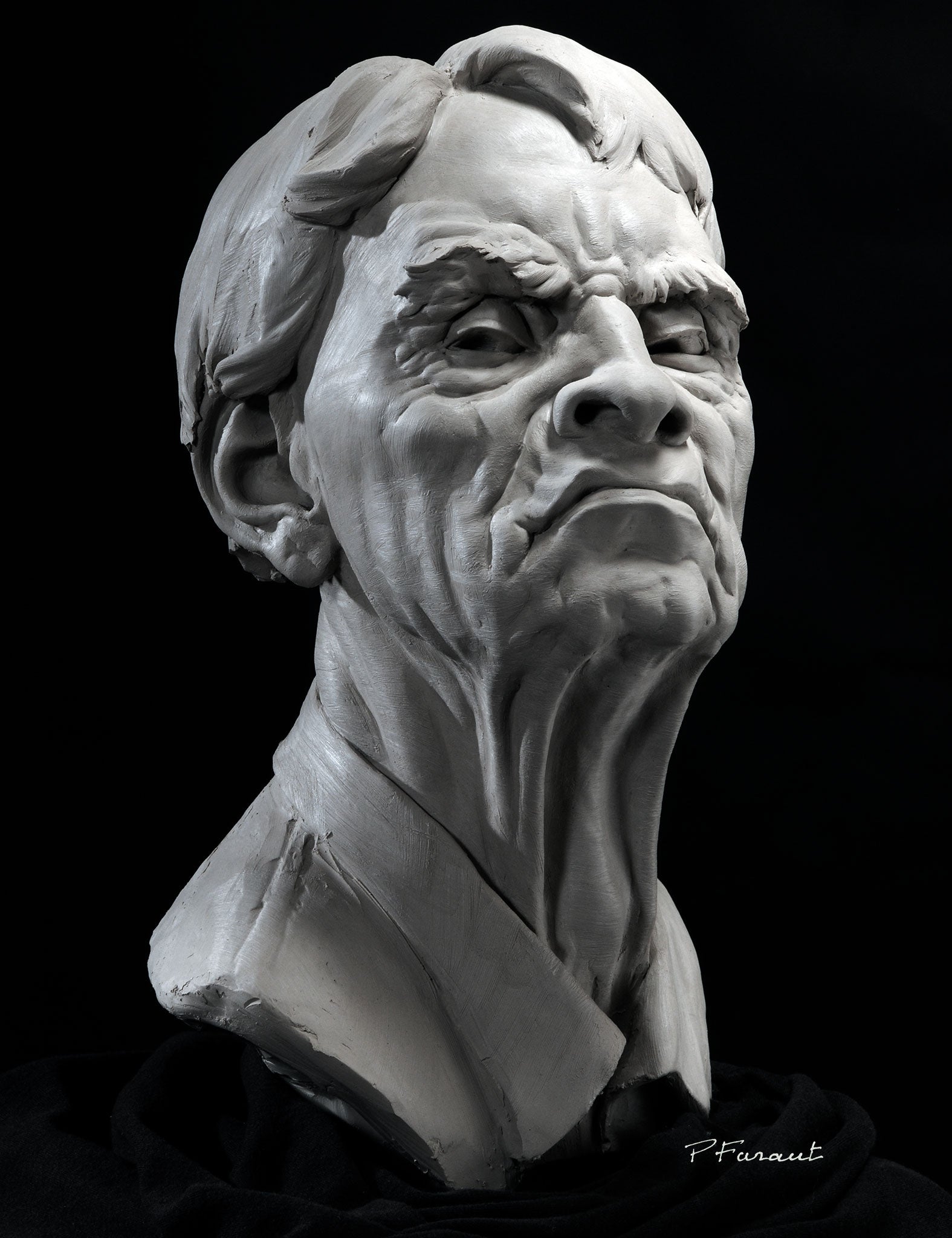Master of Faces: Discover the Globe of a Portrait Sculptor
Wiki Article
The Development of Sculptures: From Old to Modern
The Evolution of Sculptures: From Old to Modern. Robert C Hitchcock Sculptor.Sculpture, one of the earliest types of art, has been an indispensable component of human civilization for centuries. From the old human beings of Egypt and Greece to the modern-day age, sculptures have evolved, showing adjustments in creative strategies, materials, and cultural impacts. This journey with time traces the growth of sculptures, checking out the shifts in style, subject, and artistic expression.
Starting with the ancient globe, sculptures crafted from rock and later on bronze captured the essence of deities, rulers, and day-to-day life. The Renaissance period experienced a revival of classic sculpting techniques, as artists sought to mimic the graceful types of ancient Greek and Roman sculptures (Portrait Sculptor). In the modern era, musicians challenged standard borders, embracing abstraction and experimentation with new materials
This exploration will look into the diverse advancement of sculptures, revealing the abundant tapestry of imaginative expression throughout different periods and cultures.

Ancient Sculptures: From Rock to Bronze
Ancient sculptures transitioned from being taken of stone to being cast in bronze. This shift marked a considerable evolution in the art of sculpture, permitting for higher refinement and detail in the completed jobs. Stone sculptures, while impressive in their own right, were limited by the nature of the material. Rock called for considerable forming and sculpting, usually causing an extra streamlined depiction of the topic.The intro of bronze as a tool for sculptures produced a change in artistic expression. Bronze supplied sculptors the opportunity to produce elaborate and natural kinds that were not feasible with rock. The process of casting bronze allowed for the creation of numerous copies of a sculpture, enabling wider circulation and conservation of these artistic work of arts.
The transition from rock to bronze additionally saw a change in the subject issue of sculptures. While stone sculptures mostly illustrated gods, goddesses, and mythical figures, bronze sculptures began to mirror a broader series of topics, consisting of daily people and animals. This growth of subject issue showcased the convenience and adaptability of the bronze medium.
Renaissance Revival: Forming in the Classic Design
The Renaissance resurgence of sculpture observed a revival in the classical style, structure upon the advancements made throughout the change from stone to bronze in ancient sculptures. Throughout this period, artists looked for to recreate the timeless visual and ideals of charm that prevailed in old Greek and Roman sculptures.One of the crucial attributes of the Renaissance revival was the focus on naturalism and the human type. Sculptors like Donatello and Michelangelo make every effort to catch the anatomical details and expressions of their topics with unmatched accuracy. They examined the body and included their monitorings right into their sculptures, leading to realistic and reasonable depictions.
Another crucial aspect of the Renaissance rebirth was the expedition of point of view and depth. Musicians used techniques such as contrapposto, where the weight of the body is moved away, developing a feeling of movement and dynamism. They likewise explored with various materials, including marble and bronze, to accomplish a degree of sophistication and intricacy in their sculptures.

Modernism and the Avant-Garde: Breaking Conventional Limits
Throughout the Innovation and Avant-Garde movements, carvers pressed the limits of typical creative conventions. This duration, which arised in the late 19th and early 20th centuries, saw a remarkable shift in the way artists approached sculpture. Declining the idea of art as simple imitation, modernist sculptors sought to check out new forms, materials, and principles.
One of the key features of modernist sculpture was the focus on abstraction. Carvers moved away from realistic representations and rather concentrated on capturing the essence of the subject through simplified types and geometric shapes. This separation from traditional depiction allowed artists to share their emotions and concepts in a much more individual and subjective fashion.

Contemporary Sculptures: Checking Out New Products and Concepts
With a focus on checking out brand-new products and ideas, contemporary sculptures have actually reinvented the field of art. Artists today are pushing the borders of traditional sculpture by experimenting and making use of innovative products with abstract principles. These sculptures test standard notions of materiality, type, and definition, welcoming viewers to participate in a brand-new and thought-provoking imaginative experience.Contemporary sculptors are welcoming a large range of products, consisting of plastic, glass, metal, and even raw material. They are not restricted to the typical medium of rock or clay, permitting greater freedom of speech and testing. This change in the direction of unique products has opened brand-new possibilities for artists to produce sculptures that are dynamic, interactive, and visually striking.
Along with checking out new products, modern sculptures additionally look into complex and abstract principles. Musicians are now discovering themes such as identity, social concerns, and the environment, utilizing sculpture as a powerful medium for social discourse and self-contemplation. These sculptures challenge audiences to believe seriously and involve with art on a much deeper level, stimulating conversations and prompting emotional feedbacks.
Worldwide Influences: Sculptural Customs From Around the Globe
Sculptural customs from various areas of the world have substantially shaped the evolution of sculptures throughout background. The worldwide influences on sculpture have varied and have added to the splendor and variety of creative expressions. From the old worlds of Egypt, Greece, and Rome to the complex makings of Eastern societies, each region has actually created its one-of-a-kind sculptural customs that have actually influenced musicians throughout time.In ancient Egypt, sculptures were created primarily for religious and funerary purposes. The iconic sculptures of pharaohs and gods, such as the Great Sphinx and the breast of Queen Nefertiti, display the Egyptians' mastery of stone carving and their belief in the immortality.

In ancient Rome, sculpture served both political and artistic functions. Roman sculptures often illustrated emperors, generals, and mythical figures, mirroring the power and majesty of the realm. The marble statuary of Augustus of Prima Porta and the significant Arch of Constantine are remarkable instances of Roman sculptural success.
Asian sculptural practices, particularly in India, China, and Japan, have also had a profound impact on the advancement of sculptures. Japanese sculptures, affected by Buddhism, emphasize simplicity and peace, seen in the peaceful statuaries of Buddha and the elegant art of bonsai.
The global influences on sculpture remain to develop in the contemporary period. Artists today draw inspiration from numerous sculptural customs, incorporating brand-new products, strategies, and concepts to develop provocative and cutting-edge artworks. The fusion of different cultural influences has triggered a dynamic and varied sculptural landscape, mirroring the interconnectedness of our worldwide society. As we look to the future, Extra resources it is particular that the worldwide influences on sculpture will remain to shape and redefine this old art kind.
Final Thought
In verdict, the advancement of sculptures has actually seen a shift from ancient rock and bronze works to the classic revival throughout the Renaissance. Today, contemporary sculptures explore new materials and concepts, while also attracting ideas from global sculptural practices.From the old worlds of Egypt and Greece to the modern era, sculptures have progressed, mirroring adjustments in artistic methods, materials, and social influences.Beginning with the old world, sculptures crafted from stone and later on bronze recorded the significance of divine beings, leaders, and daily life.Ancient sculptures transitioned from being carved out of rock to being cast in bronze. While stone sculptures mainly portrayed gods, goddesses, and mythological numbers, bronze sculptures started to show a wider array of subjects, including daily individuals and animals.In verdict, the development of sculptures has seen a shift from ancient stone and bronze functions to the timeless revival during the Renaissance.
Report this wiki page